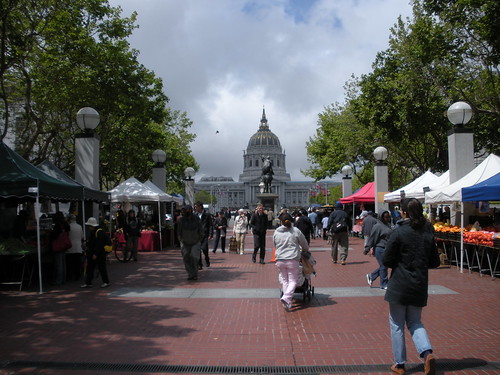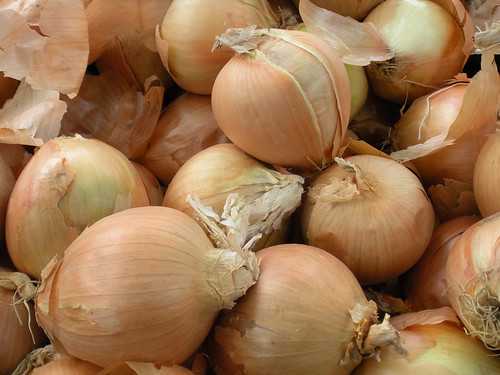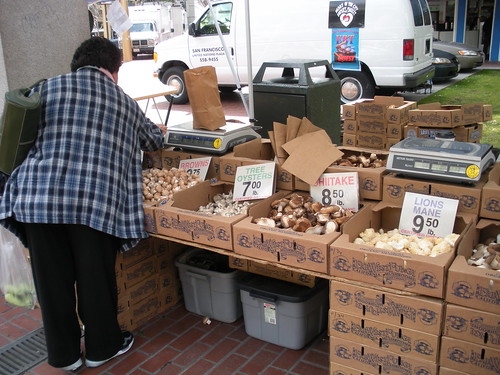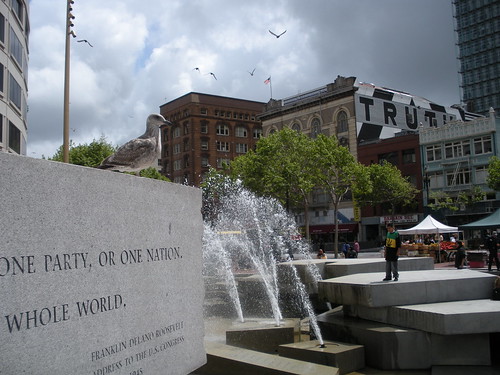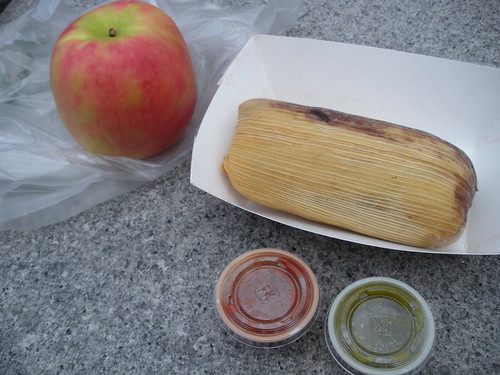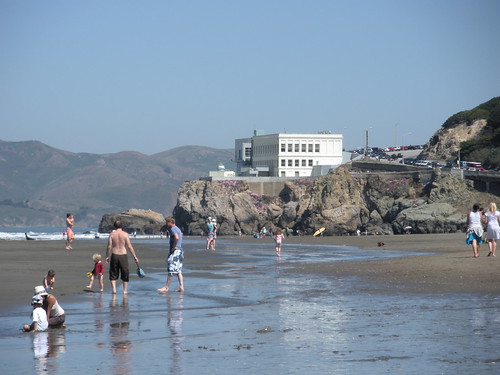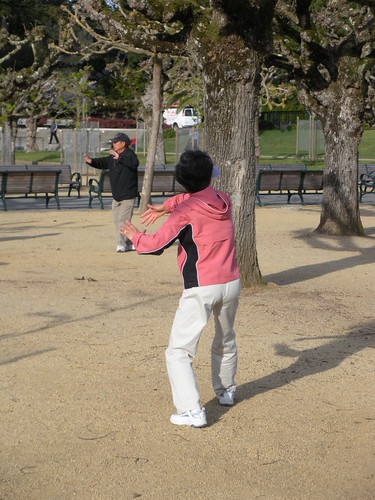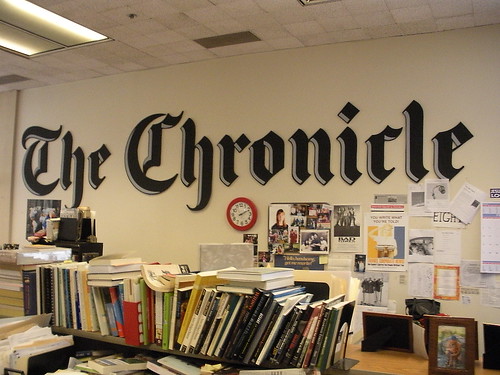
Last Friday, the San Francisco Foghorn gang got to meet with Kay Marie Jacobson, the production and design director of The San Francisco Chronicle's online platform, SFgate.com.

In a little conference room on the fourth floor of the Chronicle building, eight of us writers from the Foghorn, our adviser, and Ms. Jacobson all sat down to talk about the online future of the Foghorn, and the Chronicle.
She informed us that SFGate is in the midst of a revamp, and that their major goals are to start incorporating more and more user generated content. She said that as the web has become more interactive, they have seen a shift in user expectations about how much they should be allowed to contribute. Rather than fear the change, Jacobson said they have embraced it. Some of their ideas have been to allow users to have their own blogs, to upload their own pictures, and personalize their own profiles. Essentially, she said, SFGate is to become like its own social networking site.
The ability for users to comment all of the articles on SFGate was another big topic Jacobson talked to us about, due to our peaked interest. The Foghorn is currently incapable of allowing user comments, but as the entire staff is pretty much on board to start allowing them, we're now focusing on practical details. Particularly, we've been worried about the prospect of "inappropriate" comments that could be offensive or damaging to one's reputation. So Jacobson gave us some very practical advice, describing SFGate's screening process, their terms of use, their list of forbidden words (how I would have loved to sit in on that meeting!), and also the overall success they've found from allowing comments.
The last word of advice she left us with was, "Experiment!" Since we're in college and are not really concerned with any of this from a business perspective, now is the time to try anything and everything we want. I couldn't agree more.
After the inspiring meeting with Ms. Jacobson, politics reporter Rachel Gordon (who was working on this story at the time) gave us a tour of the Chronicle building. What a treat!
Here are some pictures I sneakily snapped along the way.
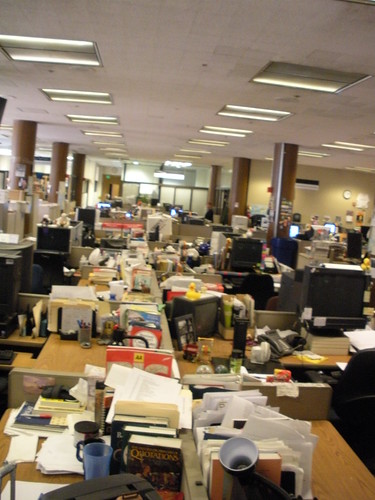 The newsroom on a Friday afternoon. It was relatively quiet that day, Gordon told us.
The newsroom on a Friday afternoon. It was relatively quiet that day, Gordon told us.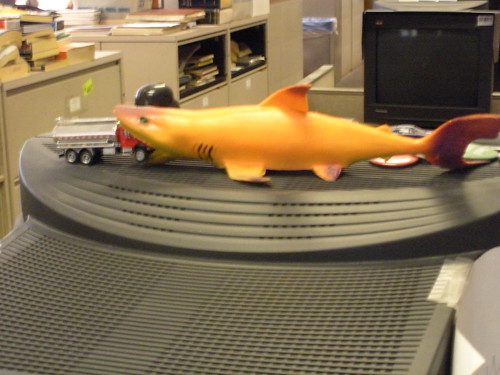 A silly desktop decoration. I guess anyone in this industry would have to have a sense of humor.
A silly desktop decoration. I guess anyone in this industry would have to have a sense of humor. I was glad to see desk organization was not a job requirement -- I'd be in serious trouble if that were the case.
I was glad to see desk organization was not a job requirement -- I'd be in serious trouble if that were the case. 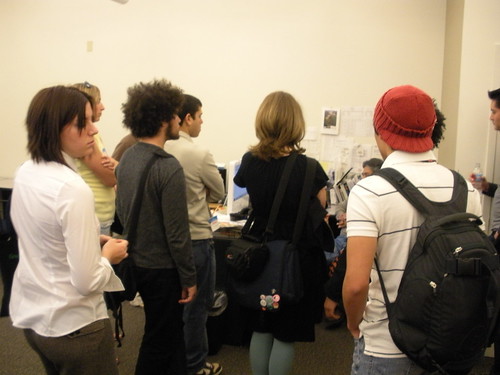 The Foghorn gang speaking with two of SFGate's primary multi-media guys. They showed us some of their favorite projects, from their first podcast (which was simply an article read aloud) to their more recent, and more sophisticated, interactive Olympic Torch Route Map.
The Foghorn gang speaking with two of SFGate's primary multi-media guys. They showed us some of their favorite projects, from their first podcast (which was simply an article read aloud) to their more recent, and more sophisticated, interactive Olympic Torch Route Map.
